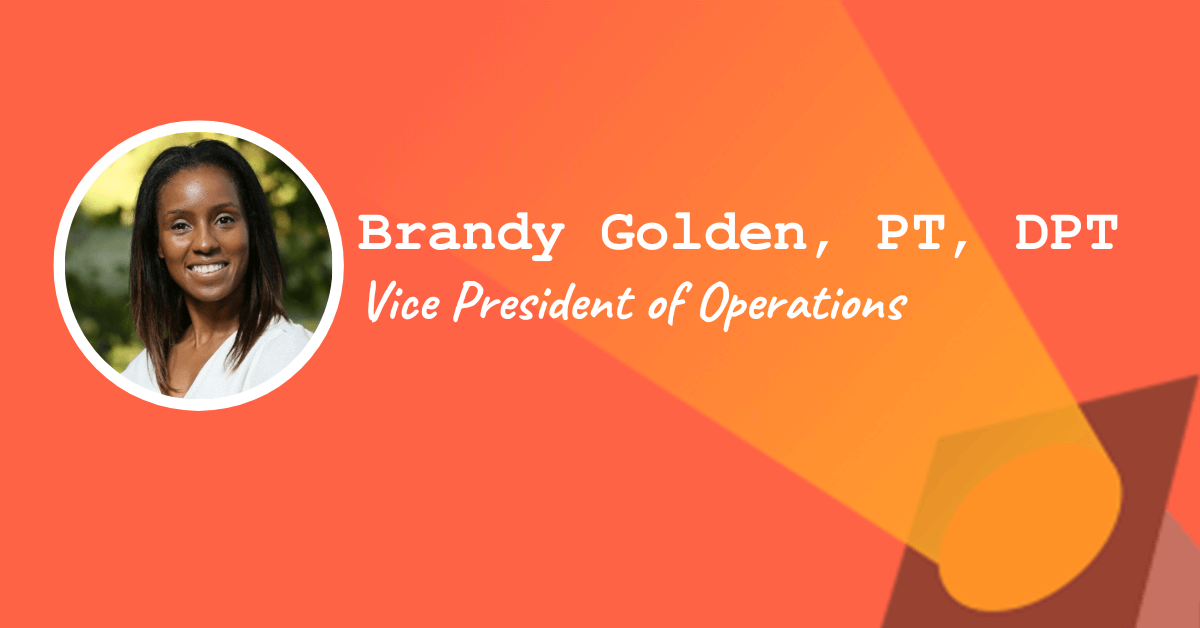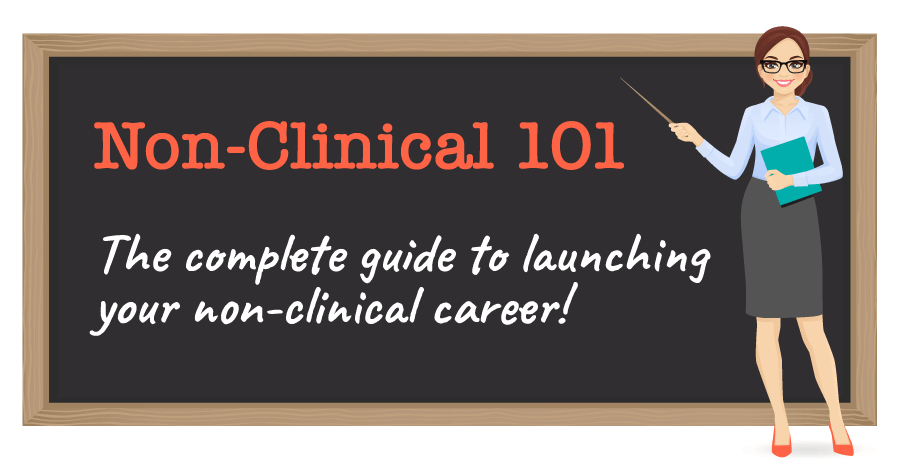This week’s spotlight is on Brandy Golden, PT, DPT, a non-clinical physical therapist who is now Vice President of Operations for Vytalize Health!
This post may contain affiliate links or codes. This won’t increase your cost, but it helps keep TNCPT alive, and free of annoying ads! Thank you for your support. 🙂
What is your full name, title, and company name for your current, primary role?
Brandy Golden, PT, DPT — Vice President of Operations for Vytalize Health

Where are you located?
Sandy Springs, GA.
Where did you go to PT school, and what year did you graduate?
Cleveland State University, 2013.
Please refrain from contacting our spotlight participants on social media. There are thousands of readers just like you out there. 🙂 Please ask your questions in the comments on this blog post.
If you’re a Non-Clinical 101 student, you can network with many of our spotlight participants in the alumni groups!
What did you do when you first finished school, and for how long?
I worked full time in a skilled nursing facility as a clinical PT for one year. Then, I transitioned to home health full time and inpatient rehab PRN.
In what setting(s) did you work, and what types of patients did you treat?
In the SNF, I treated geriatric patients, as well as young patients with SCI, stroke and TBI.
What did you enjoy about your early roles? What didn’t you enjoy?
I enjoyed interacting with patients and bringing them hope through small wins. I did not enjoy navigating the world of insurance at that time. In school, we learned about evaluation and treatment, not pre-auths, length of stay, etc.
What else have you done since then, prior to your current role?
I was a manager at a SNF, then Regional Vice President for a SNF and ALF contract company.
When and why did you decide to do something non-clinical?
In 2020, I was tired of playing the game and receiving length-of-stay recommendations based on insurance only.
I decided to begin a career that aligned more with my goals and background, as I too was a single mother, with two kids, and had once been on “the system,” using resources such as Medicaid, WIC and food stamps.
What are you doing these days?
Currently, I am in the population health space, where my primary goal is to improve patient outcomes and decrease unnecessary utilization by increasing routine preventative visits and access to care.
I lead operations to create workflows using analytics to drive outcomes. I work closely with technology and engineering teams to create solutions that improve provider efficiencies at point of care.
Are you still treating patients, or are you solely non-clinical?
I treat patients PRN one evening a week.
How long have you been in your current role?
Since August 2022.
What do you wish you would’ve known before going into this vice president of operations role?
I wish I’d had a bigger appreciation for how artificial intelligence has changed healthcare and more of an understanding of how to leverage it to enhance outcomes and efficiencies.
Did you get any special certifications or training along the way to help you get into your current role?
No. I had management experience previously. While in this role, I did receive my Project Management Professional (PMP) certification.
How did you find your job? Did you apply or find it through a connection?
I was referred to this job by my previous supervisor.
Did you do anything special to your resume and cover letter to land the job?
I emphasize how clinical initiatives that I’ve led have affected financial outcomes.
What was the interview like for the role?
It was extensive, with four interviews for the role.
What are some of the things you did to stand out, take initiative, and advance in your career?
I started as the Director of Implementation. Due to the detailed processes and standard reports created, we were able to measure success.
This led to being recognized and promoted to VP of Operations to create the similar processes organizationally.
How have people reacted to you leaving patient care?
At first, people were shocked, but now I have friends who reach out frequently for advice.
What’s a typical day or week in the life like for you? What types of tasks and responsibilities fill your time?
I have a lot of meetings with our operations, IT, product, business development, implementation and engineering teams. I spend the remaining time creating workflows and working with project managers to bring our initiatives to life.
What are some of the rewards of your role? What are the biggest challenges?
The biggest rewards are to see how making the lives of the office managers and providers easier through workflow efficiencies at point of care and how this allows for improved patient satisfaction.
The biggest challenge is making sure all departments are aligned on company projects, initiatives and processes.
How did your clinical background prepare you for this role? Which skills transferred?
My clinical background gave me more insight into drivers of unnecessary utilization, including increased length of stay in SNFs or preventable ED visits. Therefore, I was able to use those insights to implement workflows to drive change.
For instance, most patients stay longer at SNFs due to needing home modifications or due to poor discharge planning upon admission. I’m able to identify that and work with partners to build technology solutions to address it.
Or perhaps Mr. Smith went to the ED due to a one-pound weight gain, which is significant because of his CHF. I can work with my teams to provide technology solutions that flag this in the system, so the nurses can address this prior to Mr. Smith going to the ED.
In essence, we improve the patient experience, and we also decrease additional medical costs.
Roughly speaking, how are the hours and pay compared to patient care?
There are months when I work 20-hour days. Then, there are months where I work six hour days, depending on the time of the year. The pay is more aligned with our skillset, knowledge and education in this setting vs. the clinical setting.
What type of person do you think would do well in your vice president of operations role?
Someone who is:
- Detailed-oriented
- Comfortable making decisions
- Collaborative
Do you work remotely or onsite?
I work remotely 90% of the time.
Does your organization hire PT, OT, or SLP professionals into non-clinical roles? If so, what type of roles?
Yes; project managers, implementation specialists, and practice transformation specialists.
Ready to launch your own non-clinical career?
Did you read any books, take any courses, or do anything special overall to get you where you are today?
I read a lot of books. Two of my favorites are The Magic of Thinking Big by David J. Schwartz and The Subtle Art of Not Giving a F*ck by Mark Manson.
What is a typical career path for someone in your vice president of operations role?
There is no perfect path. I believe it starts with understanding the value that you bring to your current role. Choose what you want to do, and make sure you are able to translate that value onto your resume.
Healthcare is the same no matter the lane. We want to improve patient outcomes. This can be done through technology, workflows and processes in any setting.
What is next for you? What are your high-level career aspirations?
I’d love to transition into the corporate wellness space, and hopefully in five to 10 years be in consulting.
What would you recommend to someone who is considering going into a role like yours? Do you have any special words of wisdom for the readers?
Believe in yourself. Remember, it doesn’t matter if someone says, “No.” All it takes is one “Yes.”
What would you like to change most in your profession, and why? How would you propose doing so?
I’d love holistic and functional medicine approaches to be implemented more frequently and covered by insurance.
What would you teach to today’s graduate students in your profession, if you had the opportunity?
There are so many options after PT school. PT can take you so many places. Don’t box yourself in.





